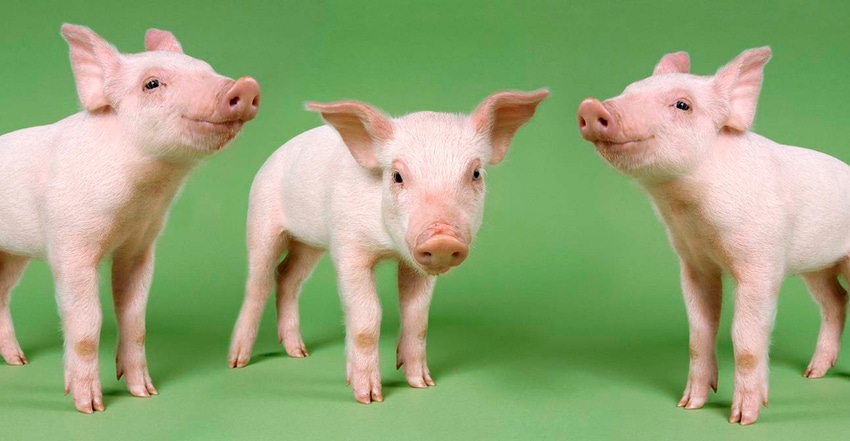January 5, 2017

A pork producer with an average sow replacement rate of 55% to 60% will end up feeding more females for fewer progeny. Aside from getting fewer pigs per gilt, a gilt’s progeny can be weaker performers than their higher-parity progeny counterparts, costing producers more as they move through growth phases.
“To counter this expense, we need to keep sows in the herd longer,” says Zach Rambo, Ph.D., swine nutritionist at Zinpro. “We know Parity 3 to 4 is the sweet spot in terms of productivity and economic return for the sow herself.”
Wide performance variations
Reports from an Australia-based pork research center found that gilt progeny:
-Weighed 0.44 pound less at birth.
-Had a 12% to 17% slower growth rate.
-On average, were 2.2 pounds lighter at weaning and 13.2 pounds lighter at 24 weeks.
Piglets born to gilts tend to have higher mortality rates and increased disease susceptibility; low birthweight is a risk for disease and mortality, and gilt progeny tend to be lighter at birth than sow progeny. Pigs weighing less than 2.65 pounds at birth account for 40% of pre-weaning mortality cases, regardless of sow parity.
According to the Australian research, gilt progeny cross-fostered to multiparous sows never reached the growth rate of sow progeny. The impact of lighter birthweights (less than 2.65 pounds) lingered, producing a fatter carcass compared to piglets with a heavier birthweight.
Gilt progeny drag down herd feed conversion
The potential performance difference between gilt and sow progeny can be seen in herd feed conversion (HFC) and feed costs. HFC accounts for the feed consumed per pound of carcass weight produced; it accounts for feed consumed by sows and progeny.
Production modeling illustrates that reducing gilt replacement rates from about 55% to 40% could improve HFC by as much as 0.30 points. As outlined in the Australian study, every point change in HFC equals 11 to 12 cents per hundredweight in the U.S. market.
Beware of the real problem
The No. 1 reason for culling early parity sows is reproductive failure, followed closely by lameness. Unfortunately, the cause of the reproductive failure – not the failure itself – could be the real leak draining the herd’s profitability.
“It’s not uncommon for a sow to be culled for reproductive failure, when the real problem might have been lameness that discouraged her from eating enough to meet her nutritional requirements,” Rambo says. “Work to get to the bottom of reproductive failures.”
Be cautious of only using the number of pigs per litter to determine when to cull sows, Rambo says. The number of pigs weaned per little might dip for higher-parity sows, but the pigs are likely to be heavier, more robust and better prepared to resist disease.
“When you’re considering factors for culling higher-parity sows, consider the full cost and impact the removal could have on the herd,” Rambo says.
Source: Purina Animal Nutrition LLC
You May Also Like




